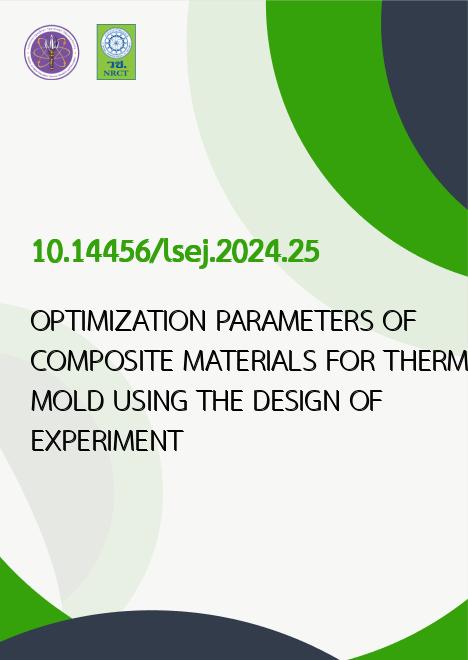
|
OPTIMIZATION PARAMETERS OF COMPOSITE MATERIALS FOR THERMOFORMING MOLD USING THE DESIGN OF EXPERIMENT |
|---|---|
| รหัสดีโอไอ | |
| Creator | Noppadol Amdee |
| Title | OPTIMIZATION PARAMETERS OF COMPOSITE MATERIALS FOR THERMOFORMING MOLD USING THE DESIGN OF EXPERIMENT |
| Contributor | Weerayut Surekhum, Adisak Sangsongfa |
| Publisher | Pibulsongkram Rajabhat University |
| Publication Year | 2567 |
| Journal Title | Life Sciences and Environment Journal |
| Journal Vol. | 25 |
| Journal No. | 2 |
| Page no. | 317-330 |
| Keyword | optimization parameters, composite materials, thermoforming mold, design of experiment |
| URL Website | https://ph01.tci-thaijo.org/index.php/psru/index |
| Website title | Life Sciences and Environment Journal |
| ISSN | 2773-9201 |
| Abstract | This research aimed to evaluate composite material design using precise en-gineering experiment principles called the design of experiment, employing the 2k full factorial test method to determine optimal mixes of natural and synthetic materials. Natural materials included ash powder, pineapple fiber powder, and sugar cane leaf fiber powder, while synthetic materials included aluminum, resin, cobalt, and resin hardener. The study utilized technical processes and experimental design methods to analyze and identify suitable composite materials. The statistical analysis demon-strated the precision of the experimental design by determining the optimum values of thermoforming molds, explicitly analyzing the Shore D hardness level compared to ASTM D2240 standards. The findings revealed that natural materials could effectively replace synthetic materials in the plastic molding industry. All factors expected to influence the Shore D value in the composite material were tested, yielding a hard-ness value not lower than or close to 80.00 Shore D. The optimal composition as the optimization parameters were identified as 70% resin, 0.01% cobalt, 2.0% hardener, and 20% aluminum powder, with a setting time of 18 hours and a temperature of 70°C. The response optimization method indicated a Shore D value of 80.6725, with experimental results closely aligning with these findings. |